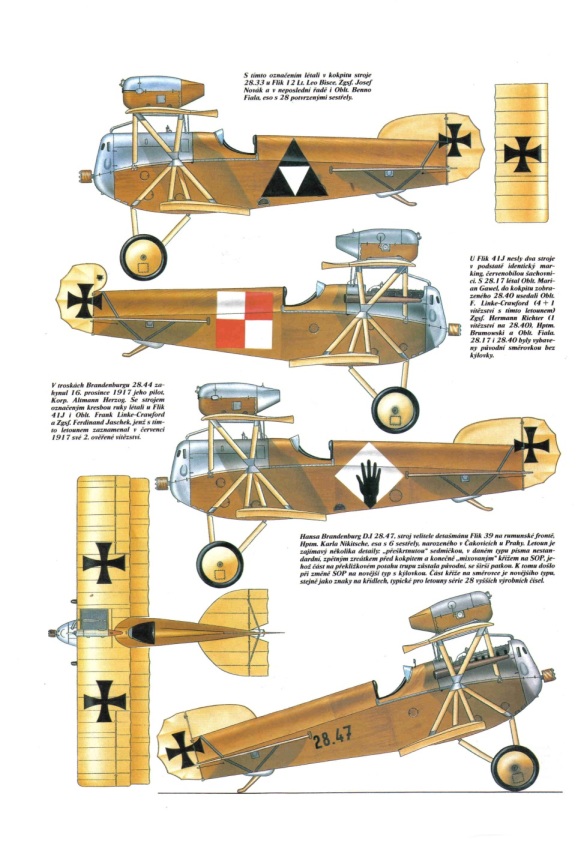The first purely Austro-Hungarian fighter to enter production was the Hansa-Brandenburg D. I biplane, which was designed by one of the German firm’s top engineers, Ernst Heinkel. Although approximately fifty were produced at the German plant, they were used exclusively by the Luftfahrtruppen (LFT). An additional seventy were produced by Phönix1 in late 1916 and began entering service in early 1917. The Hansa-Brandenburg D. I was a rather compact fighter with a wingspan of 27 ft 10.5 in., a length of 20 ft 8 in., and a loaded weight of 2,112 lbs and its 185 hp Austro-Daimler inline engine was capable of producing up to 115 mph. Nevertheless, pilots complained about its unstable flight characteristics and the poor forward visibility caused by its raised engine cowling, which made landing hazardous.
Its most unique characteristic was the use of a star-strutter system, suggested by Austrian engineering professor Richard Knoller, in which four struts attached to the top wing and four struts attached to the bottom wing converged together in a central housing approximately midway in the gap between the wings, giving it the appearance of two pyramids joined together at the points. Although this provided a strong support system for the wings, the added weight and drag may have contributed to the aircraft’s unwieldiness. The Ufag and Phonix companies tried improving the craft with modified tail configurations, with little success. Another problem of the Hansa-Brandenburg D. I was that (with the exception of some of the last produced by Phönix) it lacked a synchronized machine gun, relying instead upon a Schwarzlose mounted to the top wing-a firing system that was outmoded by the time it entered service in late 1916 and early 1917.
Although approximately fifty were produced at the German plant, they were used exclusively by the Luftfahrtruppen (LFT). An additional seventy were produced by Phönix in late 1916 and began entering service in early 1917.
As a result, only a few experienced pilots, such as Austro-Hungarian ace Godwin Brumowski, enjoyed success in the Hansa-Brandenburg D. I. Most pilots derisively referred to it as a flying coffin, which was an indictment against its lack of firepower as well as its tendency to enter deadly spins.
Type: Fighter
Dimensions: wingspan, 27 feet, 10 inches; length, 21 feet, 10 inches; height, 9 feet, two inches
Weights: empty, 1,482 pounds; gross, 2,073 pounds
Power plant: 1 x 150-horsepower Daimler liquid-cooled engine
Performance: maximum speed, 111 miles per hour; ceiling, 16,404 feet; range, 260 miles
Armament: 1 x 7.92mm machine gun
Service dates: 1916-1917
